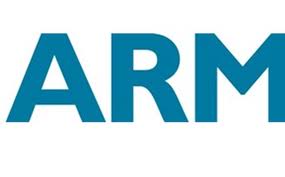ARM Q4 beats forecast, profit up by 16 percent


The PC market may be sliding, and economic conditions may be less than perfect for those within the technology industry, but this hasn't stopped the British darling of the chip-making world from producing a healthy balance statement for the the quarter ending December 31, 2012.
The Cambridge-based company announced healthy fourth quarter sales and profits -- which were higher than expected -- and claimed that the growth in the adoption of ARM technology and increased royalty payments were crucial for this result.
ARM said it generated a pre-tax profit of £80 million ($126m) on revenue of £164.2 million ($262.8m), in comparison to pre-tax profits of £69 million ($108m) on revenue of £137.8 million ($217m) in Q4 2012. This is a 16 percent increase from the same quarter a year ago.
The semiconductor designer's earnings per share stood at 4.08 pence, a rise from 3.71 pence in Q4 2011 and an increase of 10 percent based on last year's Q4 figures.
Net cash generation in Q4 2012 was £74.1 million, ($117m), in comparison to £51.5 million in Q4 2011. Net cash rates on 31 December 2012 were £520.2 million, in comparison to £477.9 million ($764.8m) in Q3 2012.
According to analysts expectations, ARM was expected to earn pretax profit of 75.6 million pounds on revenue of 152.2 million pounds. All in all, the Q4 results were above expected market figures.
To date, ARM has licensed its technology over 900 times to over than 300 partners, who have shipped over 30 billion ARM-based chips, according to the firm. However, it's not just the smartphone sector which can turn a profit for the British company -- as it continues to slowly break into the design and manufacturing process of disk drives, printers, digital cameras and even mobile security.
The firm noted that there is growth in the adoption of ARM processor technology used in everything from mobile devices to microcontrollers, and mobile devices remain one of ARM's largest markets with 2.5 billion chips being shipped. In addition, driven by strong growth in Cortex-A and Mali-based chips, processor royalties have grown 21 percent year-on-year.
ARM chief executive Warren East said in a prepared statement:
"ARM has seen good revenue and earnings growth throughout 2012. Customers are developing products to meet the needs of the post PC era and are driving demand for ARM's most advanced technology. In Q4 we again saw influential market-leaders demonstrating their commitment to ARM technology by licensing our latest products.
Royalty revenue has also grown strongly during Q4 underpinned by ARM’s market share gains and an increased royalty percentage from Cortex-A class processors being deployed into smartphones and tablets. 2013 brings exciting opportunities and challenges as ARM enters competitive new markets where we are well positioned to succeed with leading technology, an innovative business model and a thriving ecosystem of partners."
Looking ahead, ARM's outlook looks solid. The firm previously advised that Q4 would see "another strong quarter" for licensing revenue and a "moderate sequential increase" in royalty revenue, which with the release of the firm's annual results, have not fallen short.
The firm also has other cards up its sleeve to maintain a healthy profit margin. ARM designs the cores of the processors that sit inside devices including the iPhone, iPad and the majority of Android devices, but in addition, ARM said late last year that it is collaborating with partners Gemalto and Giesecke & Devrient in order to form Trustonic, a new security standard for smartphones -- a surefire way to try and gain traction in a "post-PC" industry.